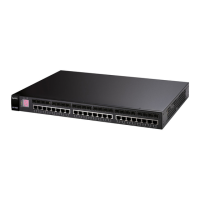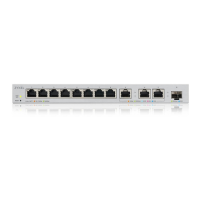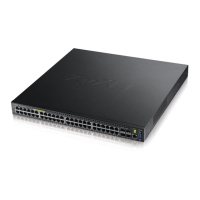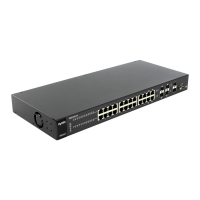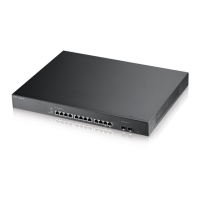Chapter 40 Link Layer Discovery Protocol (LLDP)
XGS4600 Series User’s Guide
380
40.4.1 LLDP Local Port Status Detail
This screen displays detailed LLDP status for each port on this Switch. Click Advanced Application > LLDP
> LLDP Local Status and then, click a port number, for example 1 in the local port column to display the
screen as shown next.
Management
Address TLV
The Management Address TLV identifies an address associated with the local LLDP agent
that may be used to reach higher layer entities to assist discovery by network management.
The TLV may also include the system interface number and an object identifier (OID) that are
associated with this management address.
This field displays the Management Address settings on the specified ports.
• Management Address Subtype – ipv4 or all-802
• Interface Number Subtype – unknown
• Interface Number – 0 (not supported)
• Object Identifier – 0 (not supported)
LLDP Port
Information
This displays the local port information.
SLOT This field appears only in stacking mode. Click the drop-down list to choose the slot number
of the Switch in a stack.
Local Port This displays the number of the Switch port which receives the LLDPDU from the remote
device. Click a port number to view the detailed LLDP status on this port at LLDP Local Port
Status Detail screen.
In stacking mode, the first number represents the slot ID and the second is the port number.
Please note that the default stacking ports (the last two ports of your Switch) cannot be
configured. They are reserved for stacking only.
Port ID Subtype This indicates how the port ID field is identified.
Port ID This is an alpha-numeric string that contains the specific identifier for the port from which this
LLDPDU was transmitted.
Port Description This shows the port description that the Switch will advertise from this port.
Table 170 Advanced Application > LLDP > LLDP Local Status (continued)
LABEL DESCRIPTION
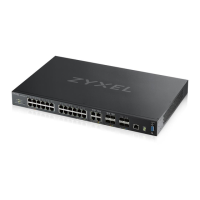
